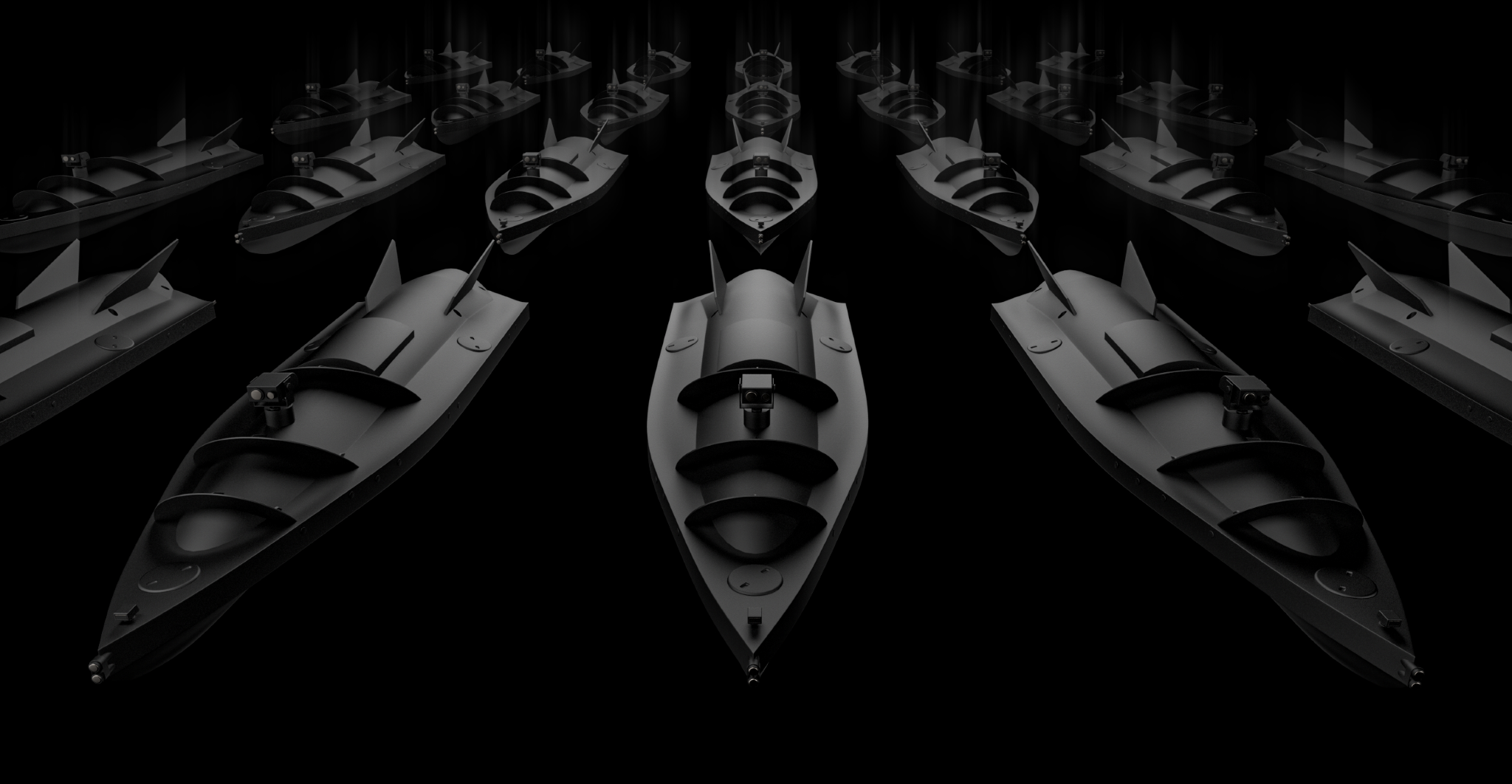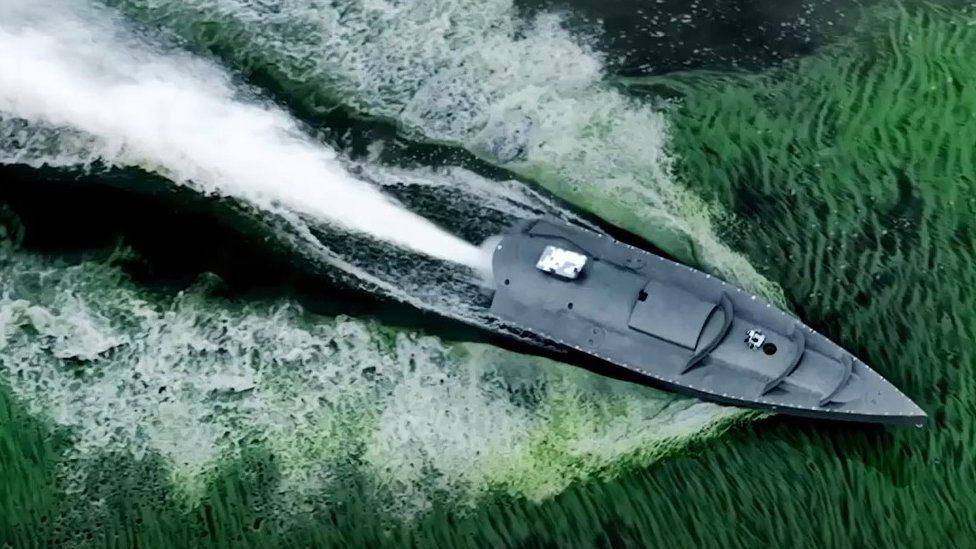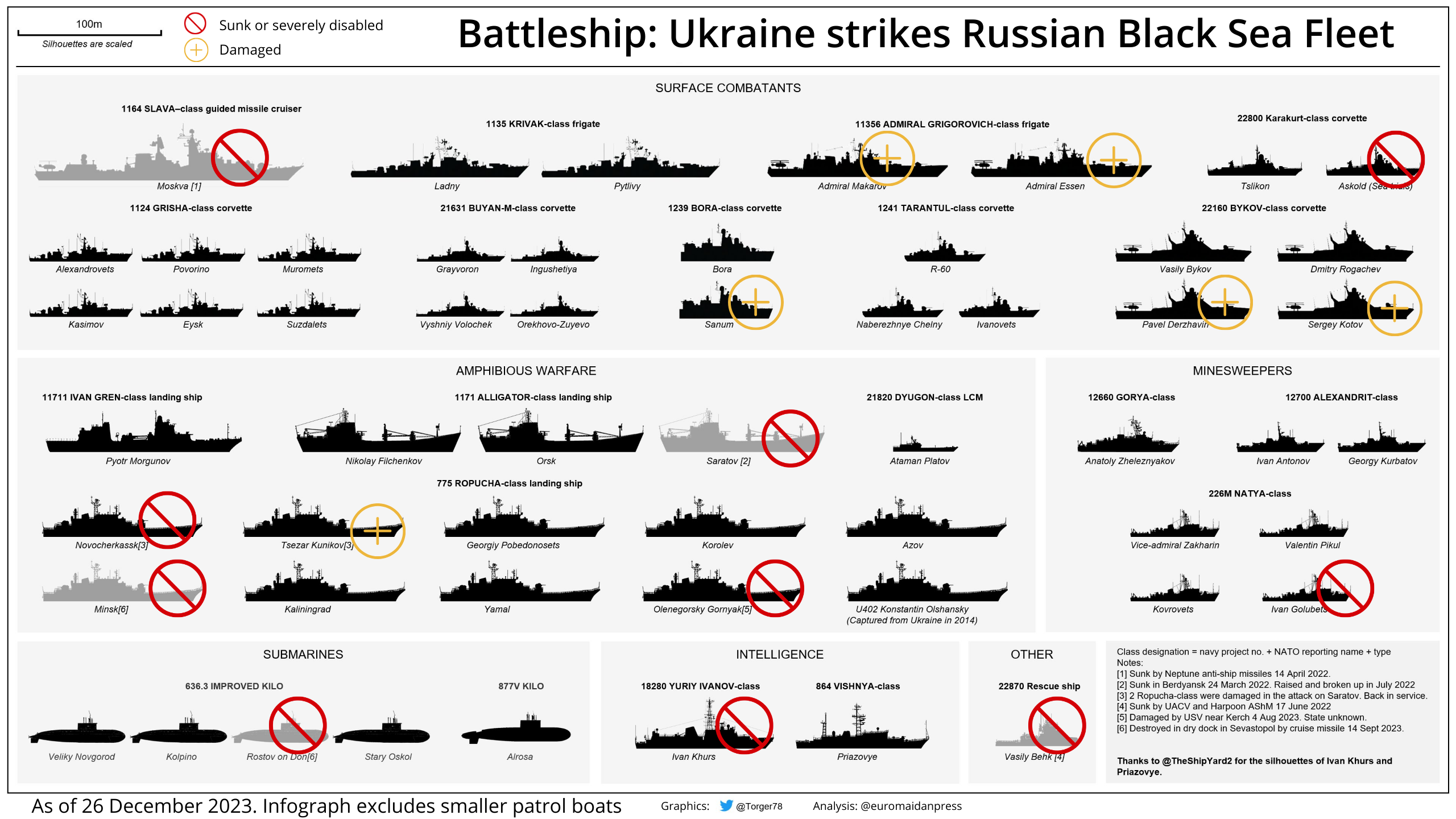The warship that aided Russia's invasion of Georgia. The fleet that ferried troops to save Assad in Syria. The fighter jets so advanced that Moscow builds only four a year — all turned to scrap without a single Western missile.
In just two years, Ukraine's low-cost, high-impact naval drones have redrawn the map of modern warfare. They shattered Russia's Black Sea blockade, reopened Ukraine's grain exports to the world, and executed the world's first naval drone takedown of two combat jets in midair — $100 million worth of Russian military pride, gone in seconds.
As Trump pressures Kyiv to concede, Ukraine's sea drones are doing what no Western navy dared: dismantling Russia's Black Sea fleet, anchored off Crimea — the very peninsula Russia seized in 2014, sparking a war still raging today.
A decade later, that theft fueled innovation — and the weapon it birthed is now sinking the Kremlin's most prized force, turning Putin's legacy land grab into a graveyard of Russia's century-long Black Sea dominance.
The worst strategic gain of the century
Russia's annexation of Crimea in 2014, which launched the current war, dealt the first major blow to Ukraine's defenses — and it hit the navy hardest. At the time, over 12,000 of Ukraine's 15,000 naval personnel and most of its fleet were based in Crimea’s Sevastopol – a strategic port long hollowed out by years of underfunding.
During the annexation, Russia seized 12 of Ukraine's 17 warships — including all missile boats and most support vessels. They destroyed or grounded naval aircraft, took over key infrastructure, and disarmed, captured, or turned Ukrainian marines in Crimea.
A few aircraft escaped to the mainland, and the remnants of the fleet regrouped in Odesa — but with over 70% of its ships and personnel gone, Ukraine's navy was left in ruins.
As Kyiv scrambled to recover, Russia transformed Crimea into a war machine. Backed by over $2.3 billion in investment, Putin made Sevastopol a naval stronghold — packing it with 30 new warships, submarines, air assets, and reviving all seven of Crimea's shipyards. By 2022, nearly 80% of Russia's Black Sea fleet — around 50 vessels and 25,000 personnel — was stationed there.
From day one of the full-scale invasion, Russia's Black Sea Fleet moved to dominate the south — launching missile strikes, backing ground offensives, and capturing Zmiinyi Island, Ukraine's last Black Sea outpost.
Rebuilt for conquest, the Crimea-based fleet instantly blockaded Ukraine's ports and choked grain exports that fed 1 in 20 people globally — 40% of Kyiv's pre-war revenue — until a year later, Ukrainian tech turned Putin's prized asset into his biggest liability.
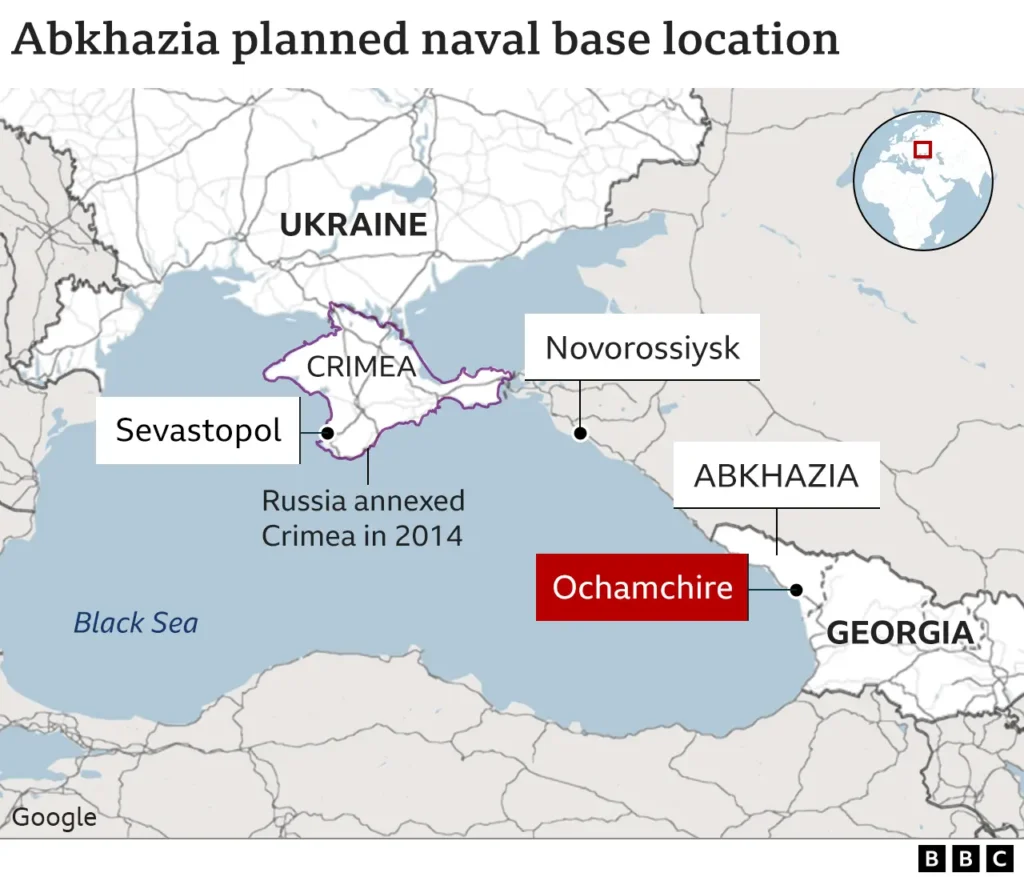
After Russia hijacked its navy, Kyiv's drones took out 5% of Putin's fleet
Foreseeing it couldn't match Russia ship-for-ship, Ukraine adopted asymmetric naval tactics even before February 2022. Once its conventional fleet was nearly wiped out, Kyiv struck back by rolling out more than 100 uncrewed surface vessels since late 2022 — reshaping the maritime battlefield on its own terms.
Ukraine's naval drone program exploded to life in summer 2022 when Brigadier General Ivan Lukashevych of Ukraine's Security Service (SBU) pitched a radical idea: build fast, uncrewed attack boats that could challenge warships costing hundreds of times more.
Initially, engineers weaponized ordinary motorboats with Starlink satellite links — each unit costing about $100,000.
Naval analyst H.I. Sutton notes that this breakthrough couldn't have happened even three years ago without high-bandwidth satellite tech, which lets operators pilot drones in real time over vast distances where traditional communications fail.
Since then, Ukraine has developed several naval drones, but two designs dominate the battlefield:
- the Magura V5, flown by the Main Directorate of Intelligence (HUR)
- the Sea Baby, operated by the Security Service of Ukraine (SBU)
These vessels serve multiple roles — surveillance, reconnaissance, patrol, search and rescue, and direct combat. What began as simple "kamikaze" sea boats has transformed into sophisticated, mobile drone-launch platforms. By late 2024, they also gained missile-launch capability and can deploy aerial drones on the fly.
Serhii Kuzan, chair of the think tank Ukrainian Security and Cooperation Center and a former adviser to Ukraine's Ministry of Defense, points out that Ukraine's drones are cost-effective — around $250,000 to $300,000 per unit — compared to much pricier Western missiles, allowing Kyiv to sustain attacks with limited resources.
The $250K tech that ousted Russia from the Black Sea
Leading the charge among these is the MAGURA V5 — short for Maritime Autonomous Guard Unmanned Robotic Apparatus — designed by the Defense Intelligence (HUR) and flown by the elite 385th USV Brigade (Group-13).
Although exact production figures aren't public, the total investment in all MAGURA V5 units built since early 2023 remains below the $60 million price tag of a single Russian missile corvette – and they have already struck several. Ukraine is also building one-way attack USVs for river operations.
Magura's low profile, minimal infrastructure needs, and expendability make them ideal for high-risk missions that would be too dangerous for crewed vessels. These naval drones combine extraordinary range, speed, and firepower:
- 500-mile endurance: Operate far beyond frontline waters without needing to refuel.
- 80 km/h (50 mph) top speed: Match the pace of dedicated speedboats to close in on targets swiftly.
- 320 kg (700 lb) payload: Carry enough explosives to breach steel hulls of warships.
- Aerial drone deployment: Launch mini-UAVs for reconnaissance or supplementary strikes.
- Missile capability: Fire anti-air munitions capable of downing helicopters and even fighter jets.
By late 2024, Ukraine's Defense Intelligence reported that the Magura V5 had successfully hit 15 Russian warships – nearly 5% of Russia's navy – and destroyed eight of them, making it the first unmanned vehicle in the world to completely destroy enemy ships in combat.
Ukraine's ingenuity with 200-to-1 battle profits
In October 2022, Ukraine launched its first domestically built naval drones in a daring assault on Russian Black Sea Fleet vessels at Sevastopol — making history as the first uncrewed boats ever to strike and damage real warships.
Among their targets was the flagship Admiral Makarov — Russia's primary blockade runner and missile-launch platform — just six months after Kyiv's missiles sent the previous flagship, Moskva, to the bottom.
Serhii Kuzan notes that these uncrewed sea drones have become Ukraine's go-to naval strike force — since 2023, they've struck Russian warships more than 21 times, sinking ten and forcing the Black Sea Fleet to pull back from Crimea's waters.
H.I. Sutton adds that this cost-effective drone campaign was so decisive that by late 2023 Moscow had pulled its patrol boats from ports it had held since 2014, and by mid-2024 abandoned Sevastopol entirely — today the fleet operates from Novorossiysk on Russia's southern coast and a base in Abkhazia, some 700 km (435 miles) from its former headquarters.
As Russian warships withdrew from the open sea, Ukrainian naval drones shifted into mobile drone‐carrier roles. Footage circulated on Russian Telegram channels shows two types of unmanned surface vessels — a missile‐armed USV and an FPV drone boat — conducting overnight strikes on an energy installation off Crimea’s coast.
However, the fight didn't stop at the water's edge. In early May 2025, Ukraine's unmanned sea drones shot down two of Russia's Su-30 fighters — the pride of Russia's air force, known for their advanced radar and super-sharp maneuvers — by firing air-to-air missiles from the sea. There are also reports that the drones use AI to help lock onto their targets more precisely.
Feeding the world, starving Assad: how Ukraine's sea drones reshape global security
Ukraine's tech payoff reaches well beyond sinking ships. After Russia quit the UN-backed Black Sea Grain Initiative in July 2023 and vowed to target any vessel bound for Ukrainian ports, Kyiv carved out its own "humanitarian corridor" with no Kremlin clearance needed.
In August 2023, Ukraine’s sea drones rocked Novorossiysk on Russia's Black Sea coast by striking the Olenegorsky Gornyak landing ship — sending a warning that any vessel enforcing Moscow’s blockade sails at its own peril.
By the following month, grain ships were sailing again from Ukrainian ports, driving down global food prices and preventing hunger emergencies in parts of Africa and the Middle East that rely on Ukraine's harvests.
Trending Now
Yet the biggest ripple played out in Syria. Between September 2023 and February 2024, Ukraine's sea drones sank two flagship vessels of the so-called "Syrian Express" — Moscow's Black Sea convoy ferrying troops and supplies to shore up Assad — while Ukrainian missiles dispatched two more, crippling Russia's lifeline to the regime.
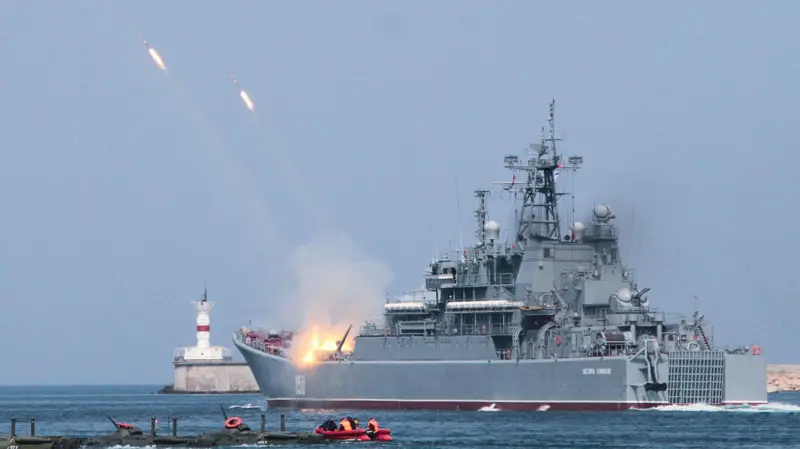
On 13 September 2023, Ukraine's missiles and naval drones sent the Ropucha-class landing ship Minsk — a linchpin of Moscow's "Syrian Express" — to the seabed. Just five months later, its sister vessel, Caesar Kunikov — one of Putin's newest flagships once aiding Russia's 2008 invasion of Georgia — was cut down by MAGURA drones, ripping another vital artery.
Finally, in January 2024, Kyiv drones sunk the missile corvette Ivanovets, Moscow's $60 million Black Sea threat to NATO and Ukrainian ships — their most expensive goal so far. The attack forced Russia to scrap its Novorossiysk-based "Syrian Express" and re-route it via the Atlantic, swelling the journey to a staggering 9,000 km — a 3.6-times longer slog that irreversibly jammed Russia's supply lines.
Goliath strikes back
Ukraine's rapid progress at sea forced Russia to unveil its own kamikaze sea drones — like the BBKN Oduvanchik — that pack a one‐way 600 kg explosive payload and are designed to smash into coastal cities such as Odesa. Lukashevych says this jump in capability represents the next phase of unmanned naval warfare.
Samuel Bendett, an adjunct senior fellow at the Center for a New American Security, points out that Ukraine's sea drone victories forced Russian engineers back to the drawing board — now they're reverse-engineering Kyiv's own unmanned boats, which Ukraine first used against the Black Sea Fleet in 2022. In the early stages, Russia's USVs underperformed simply because there were no large Ukrainian ships for them to hunt.
Bendett adds that Russia's sea-drone lineup — models like Vizier, Murena, Orcan, and BEK-1000 — has grown more ambitious. They're now designed as floating weapons hubs, packing surveillance gear, attack drones, missiles, and rockets to hunt down Ukrainian boats and coastal positions. However, Moscow has only launched a handful of these USVs so far, compared with Ukraine's nonstop deployments and rapid tactics upgrades.
"So far, there have been only a few cases of alleged Russian USV use when compared to Ukraine's continuous USV use and tactics refinement," he says.
Manned vs. unmanned: the Black Sea's new frontline
Inspired by Kyiv's wins, Russia's navy is arming its unmanned boats with homegrown FPV drones — tiny, camera-first attack craft built to pummel coastal targets, scramble sea-lane comms, and hunt down Ukraine's own USVs. As one Russian blogger quipped, FPV drones excel over open water as flat surfaces enable clear communication for far-reaching strikes.
"After Ukraine's first operations using sea drones, Russia immediately began searching for countermeasures," Kuzan says. "Initially, Russian ships and boats attempted to destroy the drones directly. Then, ships started using maritime barriers to block access."
He notes that Ukraine's sea drones have steered clear of the Kerch Bridge — the link Moscow built after annexing Crimea in 2014 — so Russia wrapped it in an ironclad shield: layered air- and sea-based air-defense batteries, floating booms and barges, plus patrol boats and helicopters. That fortress, first tested around Kerch, now mirrors the same heavy defenses at Novorossiysk harbor.
Ukrainian Navy chief Oleksiy Neizhpapa admitted that what was once an open playground for Ukraine's sea drones is now protected by stacked layers of sensors and weapons, long-, medium-, and short-range systems all plugged into a single "detect and destroy" network.
Admiral Pierre Vandier, former head of the French Navy, now in charge of NATO's transformation command, also told The Economist that Ukraine's drone hit rate plunged from 85 percent to under 10 percent as Moscow raced to adapt.
While Ukraine races ahead by adding more autonomous features to its drones, Russia is pulling back. In April 2025, lawmakers in Moscow introduced a bill to curb or even ban AI they see as a threat to public or state security.
This step would force "risky" AI systems to get government approval and outlaw any labeled "unacceptable" — including tools that might violate human rights or destabilize the country, threatening to further choke off innovation in Russia's tech industry.
AI wars on open waters
This tech arms race forces Kyiv to keep innovating to stay ahead. Brigadier General Ivan Lukashevych of the SBU reports that Kyiv now fields machine-gun-armed surface drones with a 1,700 km range, built to run in rough seas and patrol Ukrainian waters.
However, a tech edge also means bigger risks — especially when AI is involved. Twist Robotics CEO Viktor Sakharchuk warns that AI can't succeed without frontline feedback — only real combat reveals a system's quirks, and overlooking them can be deadly. Ukraine's real-world sea-drone trials give it a head start, but they also spotlight the gravest threat to autonomy: cyberattacks.
Gregory Falco, an assistant professor at Cornell University and an expert in autonomous systems, says that Ukraine's cheap, disposable drones fit its manpower-strained navy — but cautions that trying to scale up into complex swarms will bump into real limits and probably won't yield any breakthroughs over the next year.
"If we don't have assurance over the controllers and the compute and the data then autonomy is less useful than a phone call with battlefield instructions from a friend during war time," he says.
He points out that deploying any new drone-based system hinges on maintaining a robust communications link — a condition difficult to meet in the Black Sea.
"The Black Sea is an infamously communications-denied environment," he says. "Swarms of unmanned drones that have humans in the loop are more likely to be how Ukraine can have a near-term advantage."
Ukraine's undersea predators join the hunt
After its sea drones proved their mettle, Ukraine is now introducing the Kronos stealth submarine — a composite-hulled dagger that slips past radar and infrared. It rockets at about 50 mph on the surface and 31 mph submerged, dives to roughly 820 ft, and carries up to ten operators — outrunning and outstealthing most military subs.
What sets it apart is its versatility: Kronos can operate with a human crew for complex missions or switch to unmanned mode for high-risk operations. Laden with both underwater and aerial drones, this compact submarine doubles as a mobile command center that can launch multiple types of attacks from a single, difficult-to-detect platform.
Building on this evolution, Ukraine has also unveiled the Toloka underwater drone family — most notably the TLK-1000 variant, which packs a 5,000 kg (11,000 pounds) warhead, patrols up to 2,000 km (1,250 miles), and uses passive sonar and hydrophones to hunt both surface and subsurface targets.
Bendett noted that Ukraine's use of USVs is not only shaping its current defense strategy but will likely influence the structure of its future navy.
"Lessons learned by Ukraine in this war will inform how the future Ukrainian navy will shape up," he says.

